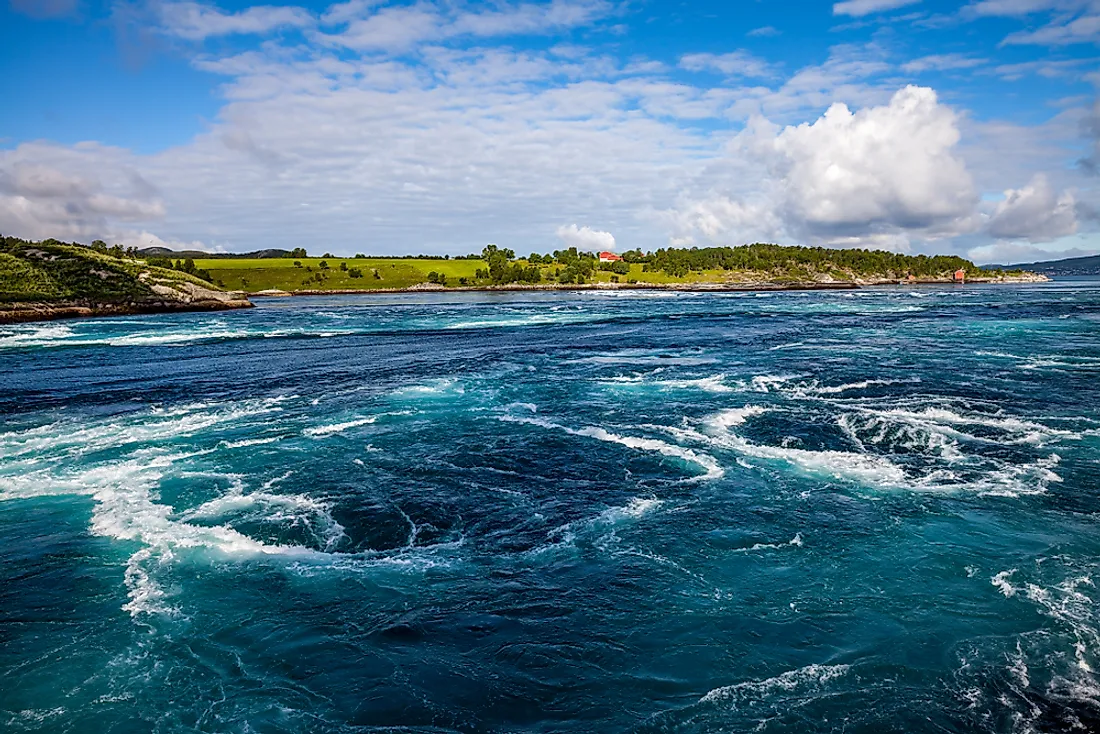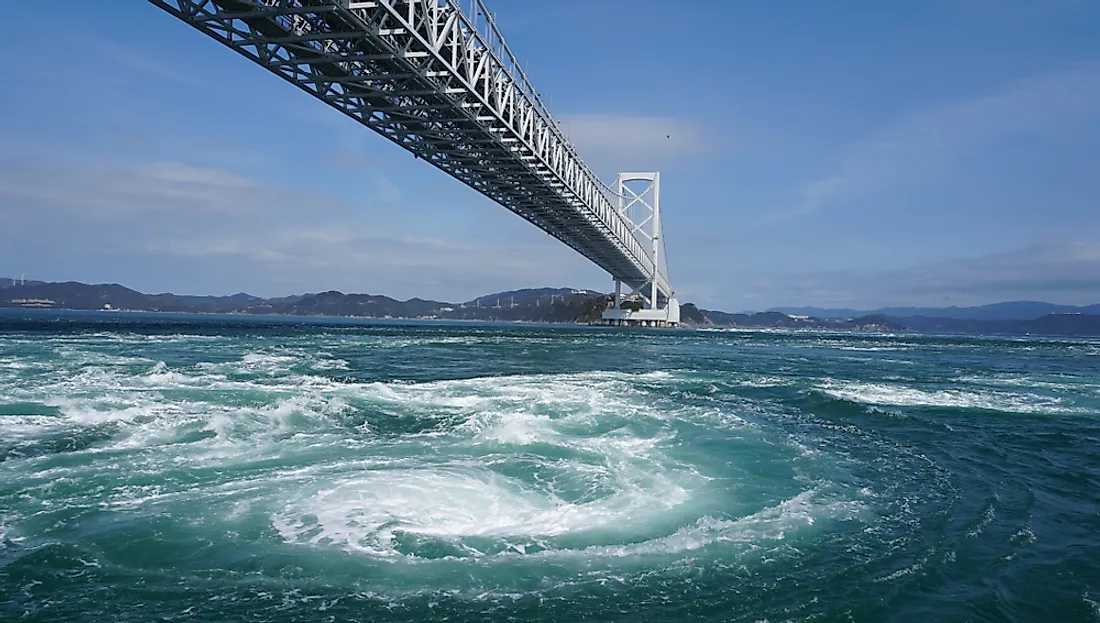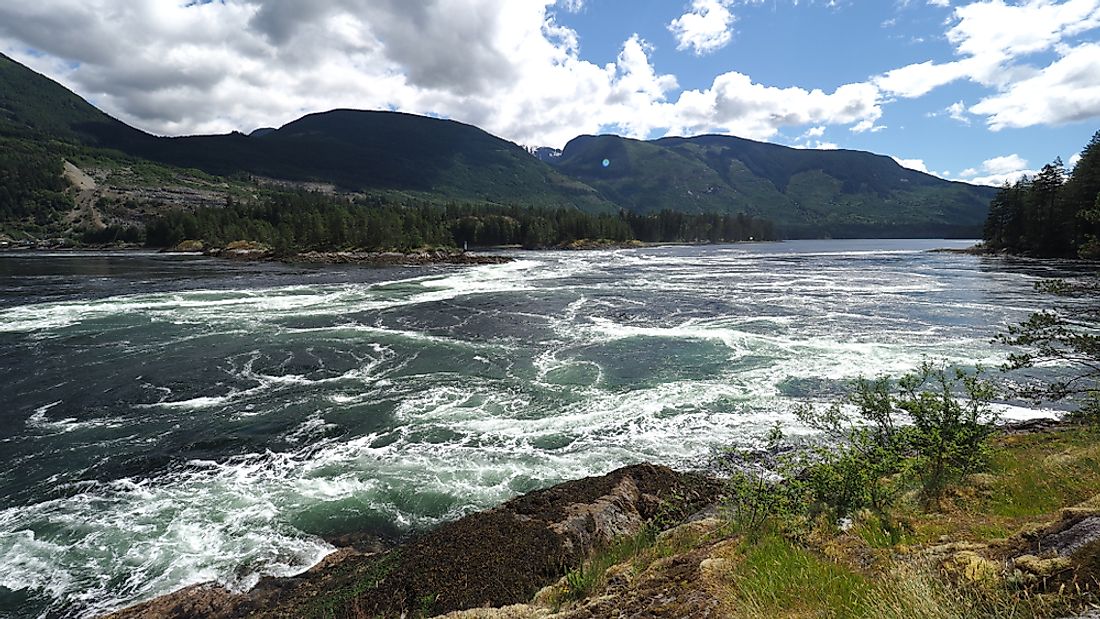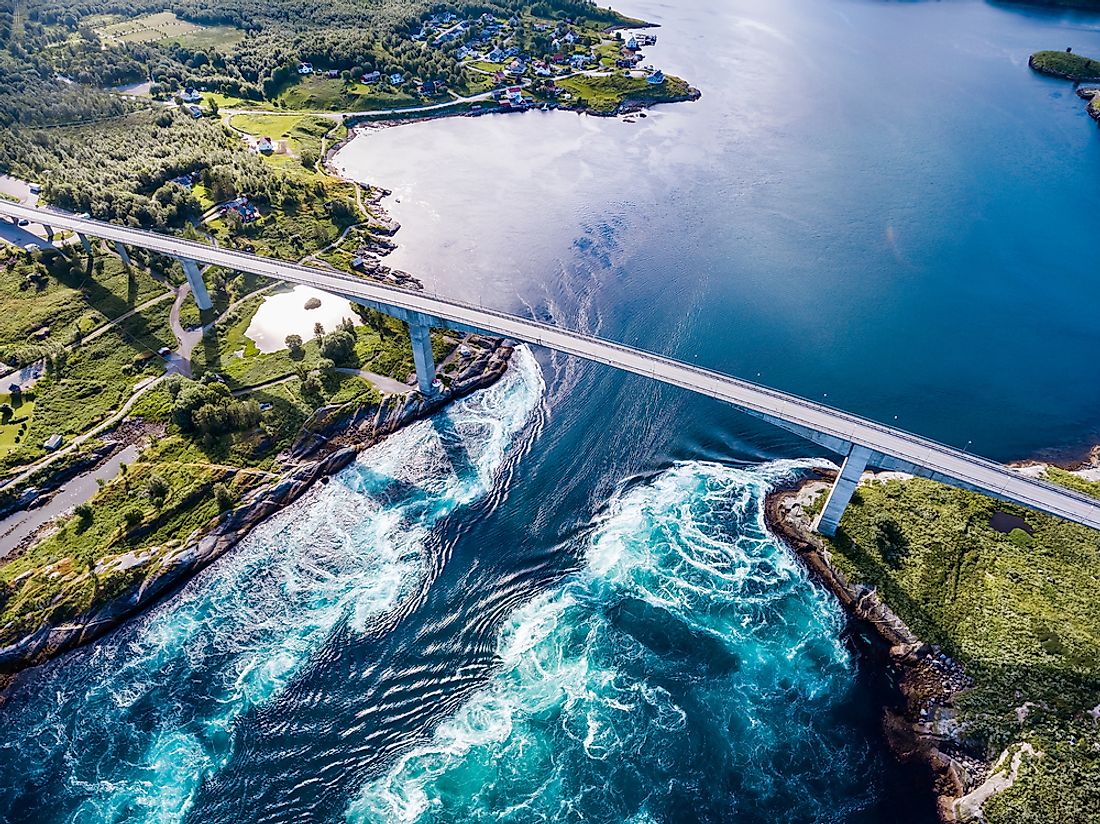The World's Largest Whirlpools

A whirlpool is a swirling water that is formed when two opposing currents meet. A whirlpool can either be very powerful and strong or not very powerful and small. Powerful ones are often referred to as maelstroms and are mainly common in seas and oceans. Smaller whirlpools are common at the base of waterfalls and can also be observed in man-made structures such as dams and weirs. In oceans, they are mainly caused by tides and are capable of submerging large ships. Whirlpool that has a downdraft is referred to as Vortex in proper terms. Below are some of the largest and notable whirlpools in the world.
6. Corryvreckan
The Gulf of Corryvreckan is a strait located between Jura and Scarba islands, Scotland. The underwater topography of the area and the strong Atlantic current conspire to create a strong tidal race. As the tides enter the strait it speeds up and meet a variety of seabed features such as deep holes and rising pinnacles. The features come together to form the Corryvreckan whirlpool, the third-largest in the world. The whirlpool is located on the northern part of the gulf and surrounds the pyramid-shaped pinnacle. The Corryvreckan Whirlpool is believed to be unnavigable by many although the Royal Navy has not classified it as so. However, the nearby Little Corryvreckan has been officially classified as unnavigable because of its violence. The divers who explore the area consider it as one of the most dangerous dives in Britain.
5. Naruto Whirlpools

Naruto Strait located between Naruto and Awaji Island in Tokushima and Hyogo, Japan respectively is known for a tidal whirlpool which has been named Naruto Whirlpool. The strait is 0.81 miles wide and connects the Inland Sea to the Pacific Ocean. The tide causes a large amount of water to move in and out of the Inland Sea twice in a day. The tide, with a range of up to 5.6 feet, causes a difference in water level of approximately 4 feet between the Inland Sea and the Pacific Ocean. Because the Naruto Strait is narrow, water rushes into it through the Naruto Channel at about 8 mph four times in a day and at 12 mph during spring tide, creating vortices of up to 66 feet in diameter. The current at the Naruto Strait is Japan’s fastest and 4th fastest in the world. Naruto Bridge offers the perfect spot for observing the whirlpools.
4. Old Sow
Old Sow is one of the largest whirlpools in the Western Hemisphere. It is situated off the shores of Deer Island in New Brunswick. The phrase “Old Sow” is obtained from the pig-like noise made by the whirlpool. It is formed by an extreme tidal range where there is an exchange of water between the Bay of Fundy and Passamaquoddy Bay and is accelerated by the unusual seafloor topography in the area. The whirlpool forms in a region of about 250 feet in diameter. The tremendous water turbulence takes place locally on the larger Old Sow region, frequently forming a huge area of several fascinating turbulence. The activities of Old Sow whirlpool is affected by the numerous currents and counter currents including tidal surges, storms, and strong winds. The whirlpool can be best viewed at Deer Point on Deer Island at the south end of the island or from Moose Island. Several other small whirlpools can also be seen in the area.
3. Skookumchuck Narrows

Skookumchuck Narrows forms the entrance of Sechelt Inlet on Sunshine Coast in British Columbia, Canada. The tidal flow of the strait and those of the Salmon Inlet and Narrows Inlet pass through the Sechelt Rapid before broadening into Sechelt Inlet. Whitecaps and whirlpools are often formed at the rapids during peak flows. Every day, large amounts of seawater are forced through the Skookumchuck Narrows by the tides. The water level difference on either side of the rapid may exceed 6.6 feet in height while the current speed may exceed 30 km/h. The tidal rapids are sometimes considered the fastest in the world. The tidal pattern causes the water to move almost all times in the narrows area.
2. Moskstraumen
Moskstraumen is one of the strongest whirlpools in the world. It is also a system tidal eddies that form on the Norwegian Sea, between the Lofoten Point of Moskenes and Vaeroy on Mosken Island. The whirlpool is formed when the strong tidal current flow between the islands and the Atlantic Ocean and the deep Vestfjorden. The largest whirlpool has a diameter of 130 to 160 feet and induces a surface water ripple of up to 3 feet. Moskstraumen result from several factors such as tides, strong winds, the position of the Lofotodden, and the topography of the underwater. Although most whirlpools occur in confined straits and rivers, Moskstraumen is an exception. It occurs in open seas. Tides on Lofoten rise twice a day and are the major contributors to the whirlpool. They combine with the Norwegian Sea current and storm-induced flow, resulting in a significant stream. The flow occurs at a depth of about 1,600 feet and meets a ridge of about 66 feet deep at Mosken and Vaeroy islands, leading to an upward movement and eddies around the region.
1. Saltstraumen

Saltstraumen is a tiny strait with a strong tidal current. The strait is situated in the municipality of Bodo in Nordland County, Norway, about 6.2 miles southeast of Bodo Town. It is about 1.9 miles long and 490 feet wide. About 400 million cubic meters of water forces its way through Saltstraumen every six hours. Whirlpools of up to 33 feet in diameter and 16 feet in depth are often formed in the area when the currents are strongest. The current is formed when the tides try to fill Skjerstand Fjord. The height difference between the sea level and fjord inside can be up to 3 feet. Saltstraumen has abundant fish including cod, wolfish, and saithe. The most common species is the coalfish with some as large as 50 pounds.











